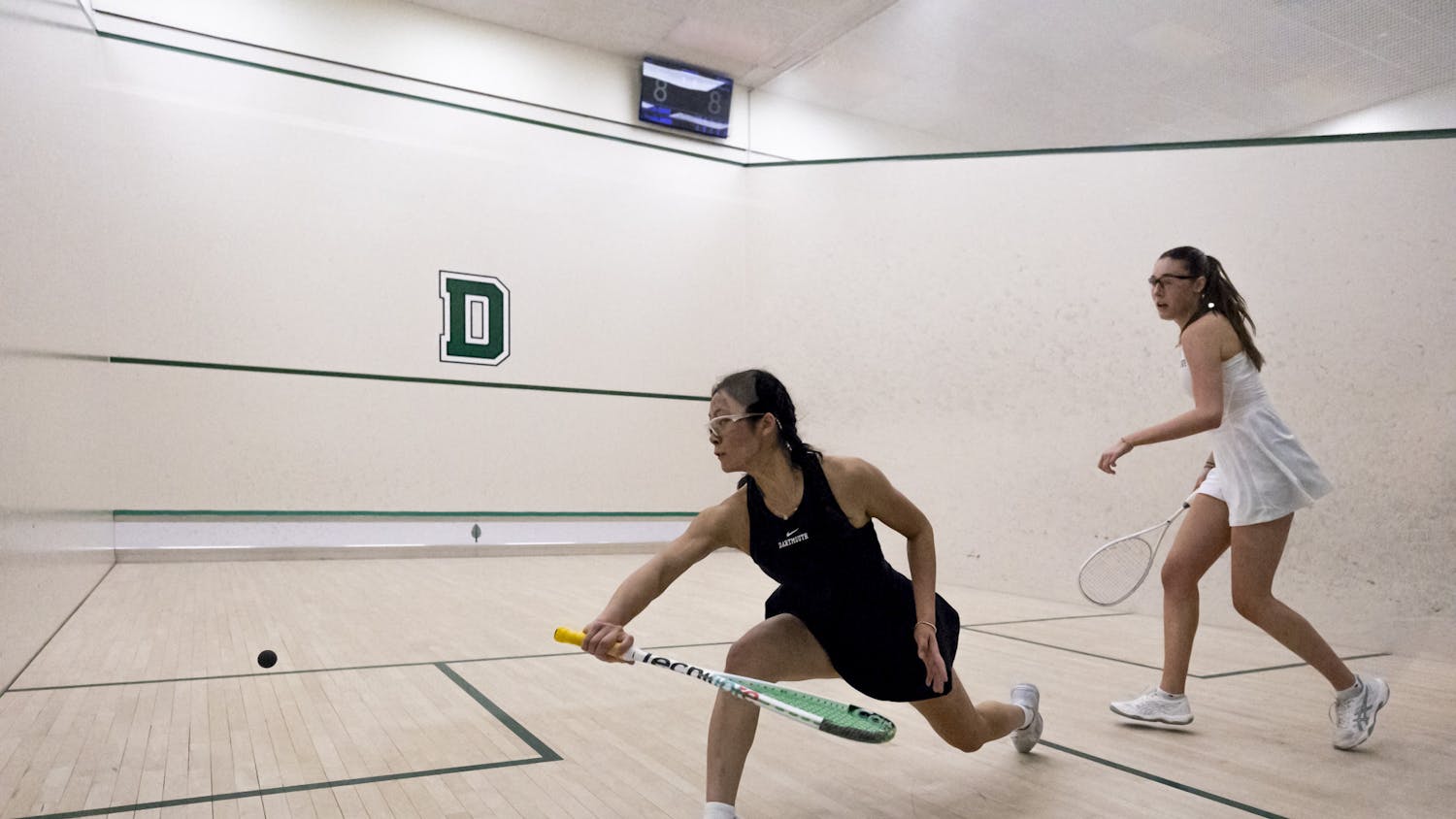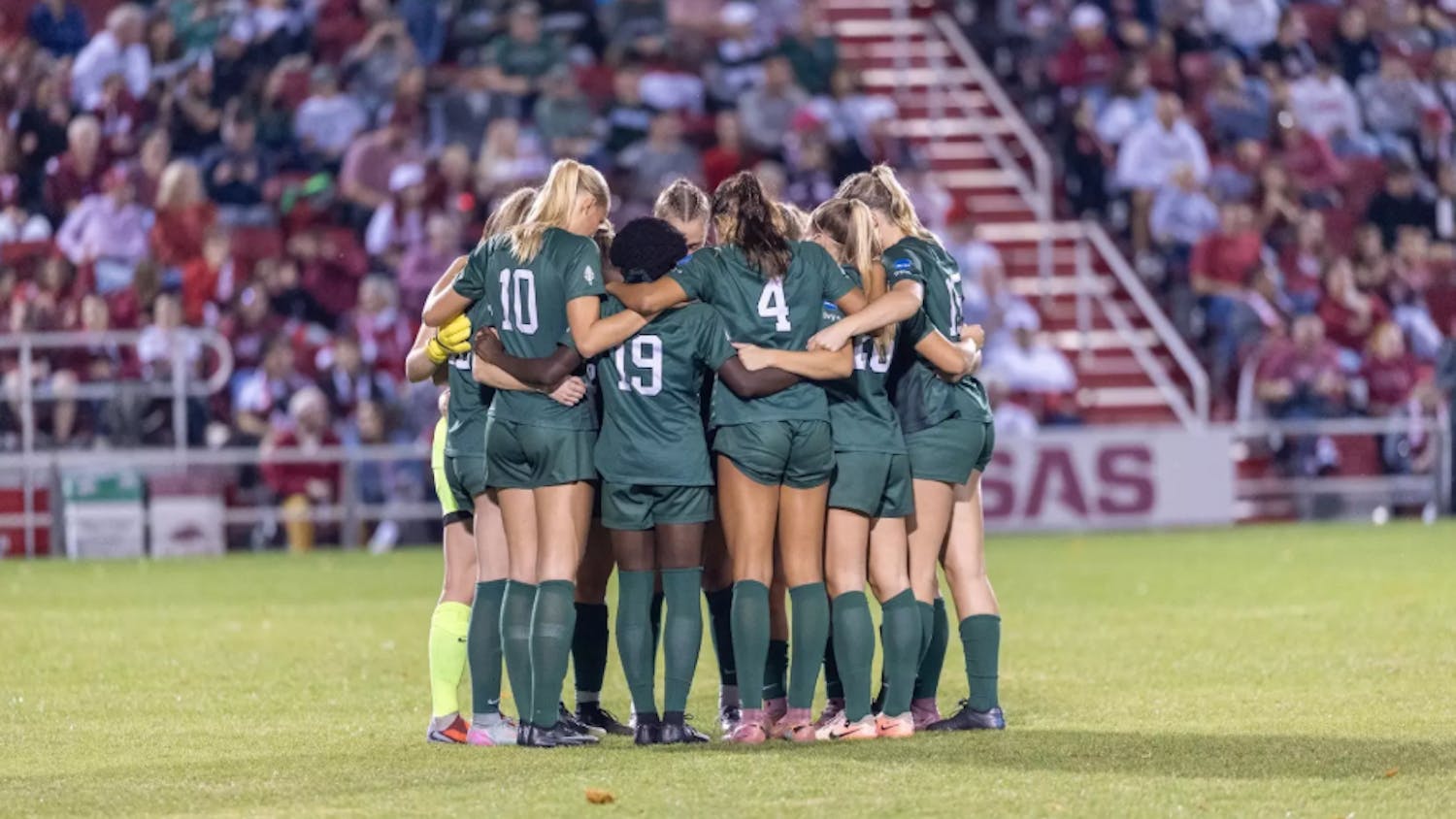Spending just over $23.4 million in fiscal year 2013, Dartmouth’s athletics department expenditures ranked the third-highest in the Ivy League, according to the Department of Education’s equity in athletics data analysis cutting tool. The University of Pennsylvania leads the League in spending, with fiscal year 2013 expenditures totaling over $39 million, and Yale University tops out above $36 million. Dartmouth’s budget more closely resembles the rest of the Ivies, which spent between $18 and $22 million overall.
In that fiscal year, Dartmouth spent almost $22,000 per athlete for its 1,067 total team members. Penn spent $39,000 for each of its 1,001 athletes and Yale, which has 960 varsity athletes, spent just over $38,000 per athlete. Brown University, which spent just over $18 million in total athletic expenditures, spent just under $17,000 per each of its 1,081 athletes. These numbers reflect total participants, not distinct student-athletes.
About half of the athletics department’s budget comes from the College, and the rest comes from a mix of alumni donations, endowed funds, corporate sponsorships, fitness center memberships, ticket revenues and NCAA grants, Dartmouth’s executive vice president and chief financial officer Richard Mills said.
In 1990, institutional support comprised 67 percent of the athletics department’s $5.6 million total revenue, while in 2013 it comprised 47 percent of the $22.1 million in revenue. Over the past two decades, alumni donations have increased significantly, growing from 8 to 24 percent of total funding sources.
Athletic director Harry Sheehy stressed that the financial investment pays off, citing the educational value of participating in a sport and the boost to Dartmouth’s visibility that comes from its athletic programs.
In 2013, 891 of 4,475 undergraduate students, just under 20 percent, participated in varsity athletics.
In terms of Ivy recruiting costs, Dartmouth ranks fifth, having spent $910,350 during the 2013 fiscal year, just under the league’s approximately $925,000 average. Princeton University spent the most on recruiting, doling out over $1.1 million that year.
Much of the College’s recruiting expenses are covered by the athletic sponsor program, which helps fund recruits’ campus visits through donations.
“I think many coaches will tell you that the most important juncture in the recruiting process is the moment a student agrees to visit a campus,” deputy director of athletics Bob Ceplikas said. “Because the moment they arrive here, all the rules change. And when I say all the rules change, I mean that if they come in with a preconceived notion, that Harvard, Yale and Princeton were household names, that starts to change once they’re here and they understand what makes this place so special.”
The College spent roughly $900,000 more on men’s sports than women’s sports, according to the College’s 2013 EADA report, with the largest difference being between the men’s and women’s ice hockey teams. This overall discrepancy is typical of Dartmouth’s Ancient Eight peers. In 2013, the men’s hockey operating expenses totaled $472,434 while the women’s operating expenses amounted to $190,391. This $280,000 difference tops the League by $130,000. Cornell’s men’s hockey team spends about $150,000 more than its women’s team, the next largest gap.
The difference, Sheehy said, is due to equipment, noting that men break sticks at a quicker rate than women.
Other reasons for differing levels of funding between sports by gender may be due to postseason competitions and coach salaries. On average, according to the Department of Education, full-time head coaches for men’s teams earn $106,089 annually while head coaches for women’s teams earn $79,917. Dartmouth coaches are paid less than their Ivy League counterparts. Princeton pays its women’s coaches the most at $107,782. Cornell’s men’s coaches make an average of $142,217. Coaches are paid based on experience, Sheehy said.
Assistant coaches average $55,123 for men’s teams and $42,311 for women’s teams.
As part of a project to raise $20 million, 10 of the College’s coaching positions have been endowed, Sheehy said.
Ceplikas, who has worked in the athletics department under four College presidents — Jim Wright, Jim Yong Kim, Carol Folt and Phil Hanlon — said each has supported the department and the Ivy League concept of athletics, which encourages widespread participation and the pursuit of excellence, Ceplikas said. No president has made an active push to decrease the department’s budget, he said.
Dartmouth’s and the other Ivies’ athletic budget is comparably smaller to those of other Division I schools, roughly one-sixth of the Ohio State University’s budget.
Sheehy said that comparing the Ivies to the power conferences is like comparing apples to oranges because they are institutionally set up to be different.
“The difference between the normal Division I model and the Ivy League is that, in the Division I model, they want you to be a standalone business,” Sheehy said. “Even though most of them lose money, they’re separate from the university and they operate separately.”
Additionally, no Ivy offers athletics scholarships.
Physical Education classes and club sports, however, are organized and funded by athletics with some subsidization from the College, Sheehy said.
Dartmouth receives several NCAA financial distributions each year, based on various factors, like the number of scholarship offers the school makes and the distribution of varsity sports offered. Since Dartmouth offers zero scholarships, Dartmouth receives zero dollars for this portion. However, thanks to their comparatively large number of varsity teams, Dartmouth and every other Ivy League school receives much more money.
Other NCAA distributions are awarded for more targeted reasons, such as one given for academic enhancement, which Dartmouth uses to fund the academic counseling portion of its Dartmouth Peak Performance program, Ceplikas said.
In order to receive corporate sponsorships, the athletic department uses its marketing staff to solicit corporate sponsors. No corporations approach Dartmouth, Ceplikas said.
Marketing focuses on local and regional businesses like Boloco and White River Toyota.
Many sports conferences and colleges receive money through lucrative media contracts. For example, power conference schools typically receive between $12 and $20 million per year, according to a report by the Delta Cost Project. The Ivy League, however, does not solicit media contracts and the Ivy League Digital Network does not bring in a significant source of income, Sheehy said.
During the last Board of Trustees meeting, the Board approved money to fix the swimming pool and the stands at Memorial Field, but Mills said neither expenditure falls within the department’s current expense budget. Instead, the pool and the stands renovations fall into the capital budget pool.
Over the past decade, Sheehy said that he believes around $94 million has been spent to upgrade athletic facilities, and Dartmouth’s only need is an indoor practice facility so that teams can practice inside during the snowy winter months.
“One reason why I like where I am is because I think the things I believe in fit here,” Sheehy said. “I’m really happy being in a non-scholarship situation philosophically.”



